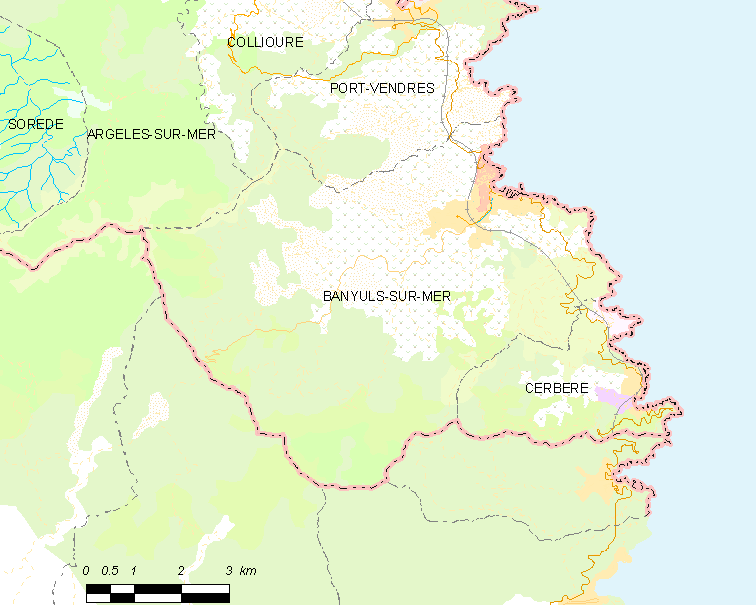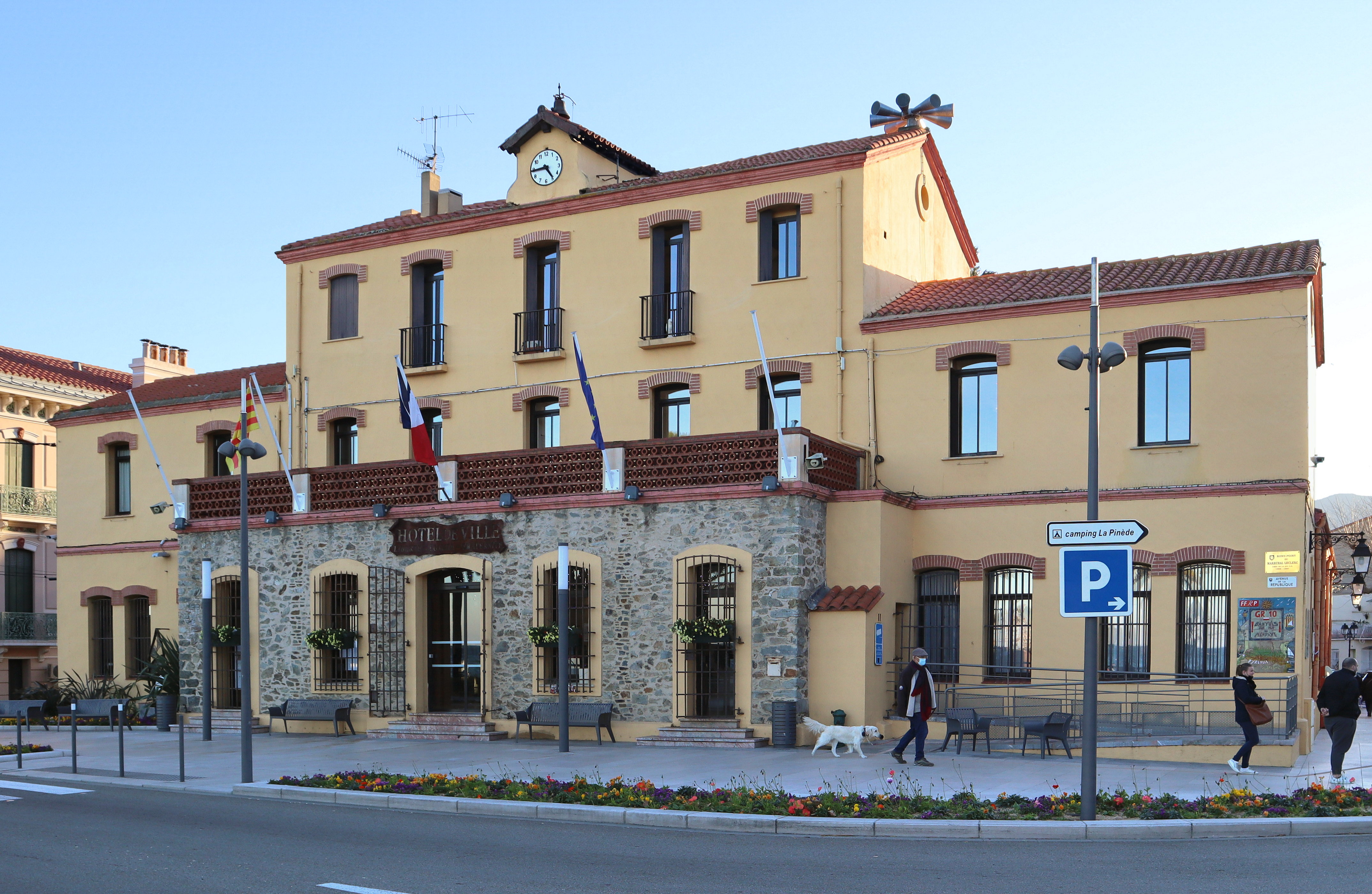|
Banyuls AOC
Banyuls is a French ''appellation d'origine contrôlée'' (AOC) for a fortified apéritif or dessert wine made from old vines cultivated in terraces on the slopes of the Catalan Pyrenees in the Roussillon county of France, bordering, to the south, the Empordà wine region in Catalonia in Spain. The AOC production area is limited to four communes of the Côte Vermeille: Banyuls (from which the AOC takes its name), Cerbère, Collioure and Port-Vendres. The boundaries of the AOC are identical to those of the Collioure AOC. Banyuls Grand Cru is an AOC for superior wines that would otherwise be classified as simply Banyuls. They must be matured for 30 months. The grapes permitted are the same. Winemaking The production process, known in France as ''mutage'', is similar to that used to make Port. Alcohol is added to the must to halt fermentation while sugar levels are still high, preserving the natural sweetness of the grape. The wines are then matured in oak barrels, or outside ... [...More Info...] [...Related Items...] OR: [Wikipedia] [Google] [Baidu] |
France
France (), officially the French Republic ( ), is a country primarily located in Western Europe. It also comprises of Overseas France, overseas regions and territories in the Americas and the Atlantic Ocean, Atlantic, Pacific Ocean, Pacific and Indian Oceans. Its Metropolitan France, metropolitan area extends from the Rhine to the Atlantic Ocean and from the Mediterranean Sea to the English Channel and the North Sea; overseas territories include French Guiana in South America, Saint Pierre and Miquelon in the North Atlantic, the French West Indies, and many islands in Oceania and the Indian Ocean. Due to its several coastal territories, France has the largest exclusive economic zone in the world. France borders Belgium, Luxembourg, Germany, Switzerland, Monaco, Italy, Andorra, and Spain in continental Europe, as well as the Kingdom of the Netherlands, Netherlands, Suriname, and Brazil in the Americas via its overseas territories in French Guiana and Saint Martin (island), ... [...More Info...] [...Related Items...] OR: [Wikipedia] [Google] [Baidu] |
Dessert Wine
Dessert wines, sometimes called pudding wines in the United Kingdom, are sweet wines typically served with dessert. There is no simple definition of a dessert wine. In the UK, a dessert wine is considered to be any sweet wine drunk with a meal, as opposed to the white fortified wines ( fino and amontillado sherry) drunk before the meal and the red fortified wines (port and madeira) drunk after it. Thus, most fortified wines are regarded as distinct from dessert wines, but some of the less-strong fortified white wines, such as Pedro Ximénez sherry and Muscat de Beaumes-de-Venise, are regarded as honorary dessert wines. In the United States, by contrast, a dessert wine is legally defined as any wine over 14% alcohol by volume, which includes all fortified wines—and is taxed more highly as a result. This dates back to when the US wine industry only made dessert wines by fortification, but such a classification is outdated now that modern yeast and viticulture can produce dry wi ... [...More Info...] [...Related Items...] OR: [Wikipedia] [Google] [Baidu] |
Fermentation (wine)
The process of fermentation in winemaking turns grape juice into an alcoholic beverage. During fermentation, yeasts transform sugars present in the juice into ethanol and carbon dioxide (as a by-product). In winemaking, the temperature and speed of fermentation are important considerations as well as the levels of oxygen present in the must at the start of the fermentation. The risk of stuck fermentation and the development of several wine faults can also occur during this stage, which can last anywhere from 5 to 14 days for ''primary fermentation'' and potentially another 5 to 10 days for a '' secondary fermentation''. Fermentation may be done in stainless steel tanks, which is common with many white wines like Riesling, in an open wooden vat, inside a wine barrel and inside the wine bottle itself as in the production of many sparkling wines. History The natural occurrence of fermentation means it was probably first observed long ago by humans.H. Johnson: ''Vintage: The Story ... [...More Info...] [...Related Items...] OR: [Wikipedia] [Google] [Baidu] |
Port Wine
Port wine (also known as vinho do Porto, , or simply port) is a Portuguese fortified wine produced in the Douro Valley of northern Portugal. It is typically a sweet red wine, often served with dessert, although it also comes in dry, semi-dry, and white varieties. Other port-style fortified wines are produced outside Portugalin Argentina, Australia, Canada, France, India, South Africa, Spain, and the United Statesbut under the European Union Protected Designation of Origin guidelines, only wines from Portugal are allowed to be labelled "port". Region and production Port is produced from grapes grown and processed in the demarcated Douro region.Porter, Darwin & Danforth Price (2000) ''Frommer's Portugal'' 16th ed., p. 402. IDG Books Worldwide, Inc. The wine produced is then fortified by the addition of a neutral grape spirit known as aguardente to stop the fermentation, leaving residual sugar in the wine, and to boost the alcohol content. The fortification spirit is ... [...More Info...] [...Related Items...] OR: [Wikipedia] [Google] [Baidu] |
Mutage
Mutage is a wine making technique for making sweet wines. Typical mechanism The typical process involves the addition of alcohol to the '' must'' so that the fermentation process is prematurely stopped. Most yeasts die when the alcohol content in their environment is raised to approximately 13–15%. By stopping the fermentation of sugars, a sweet taste of the wine is achieved. This technique is used to make port wine and other sweet wines with high alcohol content. Accessed 16 September 2010 Types of mutage Two types of mutage are sometimes distinguished. A distinction being made between adding alcohol to the must before fermentation and adding during fermentation. # ''Mutage sur grain'': Where the mutage takes place during[...More Info...] [...Related Items...] OR: [Wikipedia] [Google] [Baidu] |
Banyuls Wine
Banyuls-sur-Mer (; ) is a commune in the Pyrénées-Orientales department in southern France. It was first settled by Greeks starting in 400 BCE. Geography Location Banyuls-sur-Mer is located in the canton of La Côte Vermeille and in the arrondissement of Céret. Banyuls-sur-Mer is neighbored by Cerbère, Port-Vendres, Argelès-sur-Mer and Collioure on its French borders, and by Espolla, Rabós, Colera and Portbou on its Spanish borders. The foothills of Pyrenees, the ''Monts Albères'', run into the Mediterranean Sea in Banyuls-sur-Mer, creating a steep cliff line. Toponymy Banyuls-sur-Mer was first mentioned in 981 as ''Balneum'' or ''Balneola''. In 1074, the town started being called ''Bannils de Maritimo'' in order to distinguish it from Banyuls-dels-Aspres, which lies away. In 1197, the town was mentioned as ''Banullis de Maredine'' and in 1674. In Catalan, it has been called ''Banyuls de la Marenda'' since the 19th century. The name Banyuls indicates the presence of ... [...More Info...] [...Related Items...] OR: [Wikipedia] [Google] [Baidu] |
Collioure AOC
Collioure is an Appellation d'Origine Contrôlée (AOC) for French wines situated around the town of Collioure in the Roussillon wine region of France. Red, rosé and a few white wines are produced-the reds from Grenache noir, Mourvèdre, Syrah, Carignan and Cinsaut grapes; the white are made from a blend of Grenache blanc and Grenache gris.P. Saunders ''Wine Label Language'' pg 55 Firefly Books 2004 The boundaries of the AOC are identical with the Banyuls AOC as many of the grapes grown in Collioure are destined for use in the fortified '' Vins doux naturels'' of the region. The grapes that do not get used for Banyuls are then produced as non-fortified still wines under the Collioure AOC.J. Robinson (ed) ''"The Oxford Companion to Wine"'' Third Edition pg 188 Oxford University Press 2006 History Viticulture was likely introduced to the area soon after the ancient Greeks introduced winemaking to the Languedoc are in the 6th century BC. Under the Romans, viticulture spread thro ... [...More Info...] [...Related Items...] OR: [Wikipedia] [Google] [Baidu] |
Banyuls De La Marenda (Banyuls-sur-Mer)
Banyuls-sur-Mer (; ) is a commune in the Pyrénées-Orientales department in southern France. It was first settled by Greeks starting in 400 BCE. Geography Location Banyuls-sur-Mer is located in the canton of La Côte Vermeille and in the arrondissement of Céret. Banyuls-sur-Mer is neighbored by Cerbère, Port-Vendres, Argelès-sur-Mer and Collioure on its French borders, and by Espolla, Rabós, Colera and Portbou on its Spanish borders. The foothills of Pyrenees, the ''Monts Albères'', run into the Mediterranean Sea in Banyuls-sur-Mer, creating a steep cliff line. Toponymy Banyuls-sur-Mer was first mentioned in 981 as ''Balneum'' or ''Balneola''. In 1074, the town started being called ''Bannils de Maritimo'' in order to distinguish it from Banyuls-dels-Aspres, which lies away. In 1197, the town was mentioned as ''Banullis de Maredine'' and in 1674. In Catalan, it has been called ''Banyuls de la Marenda'' since the 19th century. The name Banyuls indicates the presence of ... [...More Info...] [...Related Items...] OR: [Wikipedia] [Google] [Baidu] |
Côte Vermeille
The Côte Vermeille ( ca, Costa Vermella, meaning "vermilion coast") is a region in the French Departments of France, department of Pyrénées-Orientales on the Mediterranean Coast near the border with Spain. The Côte Vermeille stretches from Argelès-sur-Mer to the border village of Cerbère. The towns of Collioure, Port-Vendres and Banyuls-sur-Mer are nested along a 20 km stretch of beaches, small bays, creeks and coves. See also * Paulilles * Natura 2000 * Route départementale 914 Landforms of Pyrénées-Orientales Protected areas of France Northern Catalonia Coasts of France, Vermeille {{Europe-protected-area-stub ... [...More Info...] [...Related Items...] OR: [Wikipedia] [Google] [Baidu] |
Spain
, image_flag = Bandera de España.svg , image_coat = Escudo de España (mazonado).svg , national_motto = ''Plus ultra'' (Latin)(English: "Further Beyond") , national_anthem = (English: "Royal March") , image_map = , map_caption = , image_map2 = , capital = Madrid , coordinates = , largest_city = Madrid , languages_type = Official language , languages = Spanish language, Spanish , ethnic_groups = , ethnic_groups_year = , ethnic_groups_ref = , religion = , religion_ref = , religion_year = 2020 , demonym = , government_type = Unitary state, Unitary Parliamentary system, parliamentary constitutional monarchy , leader_title1 = Monarchy of Spain, Monarch , leader_name1 = Felipe VI , leader_title2 = Prime Minister of Spain ... [...More Info...] [...Related Items...] OR: [Wikipedia] [Google] [Baidu] |
Catalonia
Catalonia (; ca, Catalunya ; Aranese Occitan: ''Catalonha'' ; es, Cataluña ) is an autonomous community of Spain, designated as a ''nationality'' by its Statute of Autonomy. Most of the territory (except the Val d'Aran) lies on the northeast of the Iberian Peninsula, to the south of the Pyrenees mountain range. Catalonia is administratively divided into four provinces: Barcelona, Girona, Lleida, and Tarragona. The capital and largest city, Barcelona is the second-most populated municipality in Spain and the fifth-most populous urban area in the European Union.Demographia: World Urban Areas – Demographia, April 2018 Current day Catalonia comprises most of the medieval and early modern Principality o ... [...More Info...] [...Related Items...] OR: [Wikipedia] [Google] [Baidu] |
Empordà (DO)
Empordà is a Spanish Denominación de Origen Protegida (DOP) (''Denominació d'Origen Protegida'' in Catalan) for wines produced in the northeastern corner of Catalonia, Spain in the province of Girona. The region generally extends from the town of Figueres northwards to the French border and the French wine-making regions of Banyuls and Côtes du Roussillon. To the south, it extends through Baix Empordà near the Mediterranean Sea. The DOP is crossed by the rivers Muga, Llobregat and Manol which flow eastwards to the sea. History Archaeologists have suggested that vines were first introduced to this region by the Phoenicians in the 5th century BC. The ancient Romans and the Benedictine monks later also contributed. The first written documentation dates from 1130 and was a treatise on wine written by Father Pere de Novas in the Monastery of Sant Pere de Rodes. As in Penedès, this area used to produce strong sweet wines which were very popular until the 1930s. The regio ... [...More Info...] [...Related Items...] OR: [Wikipedia] [Google] [Baidu] |

.jpg)




